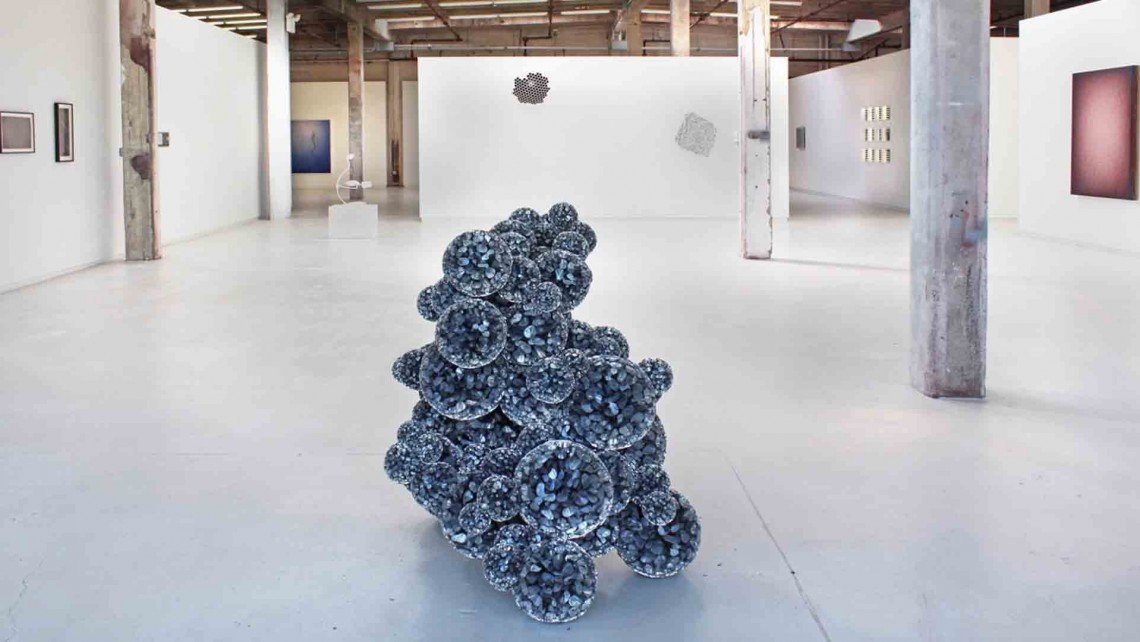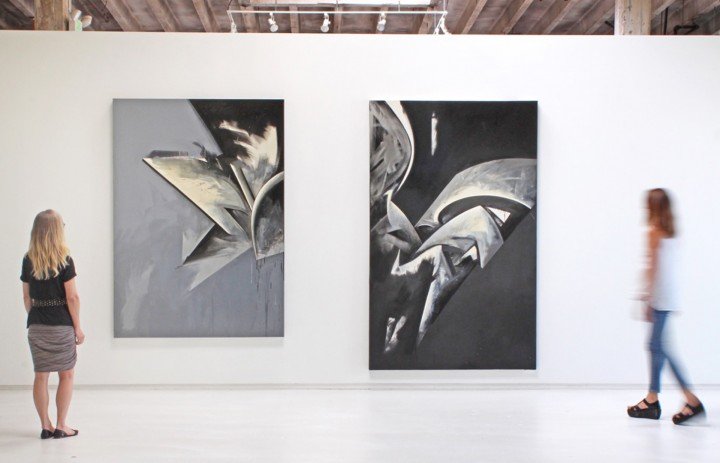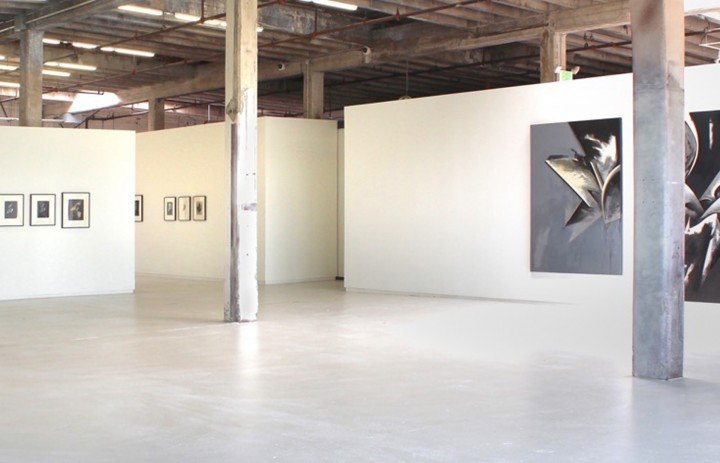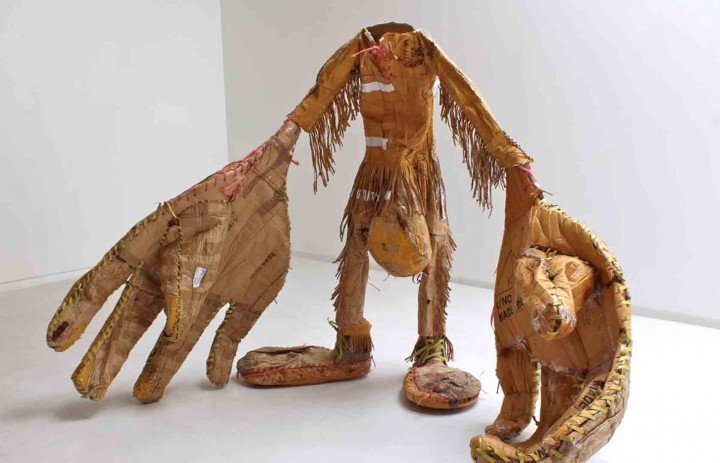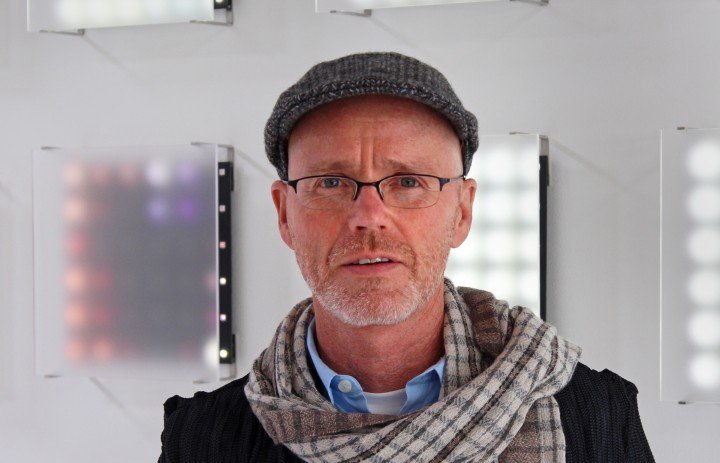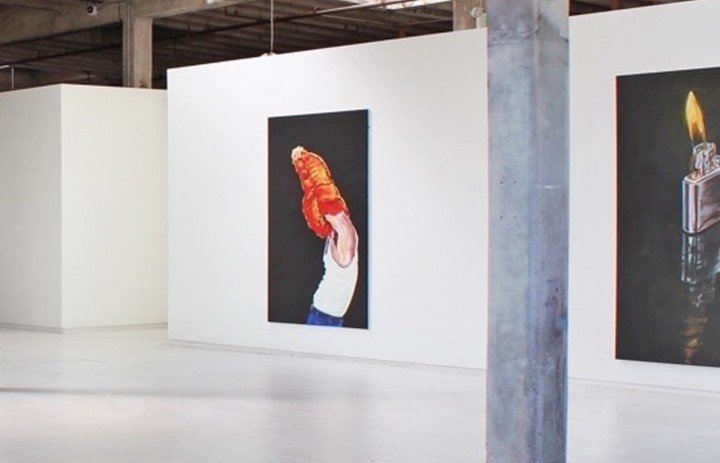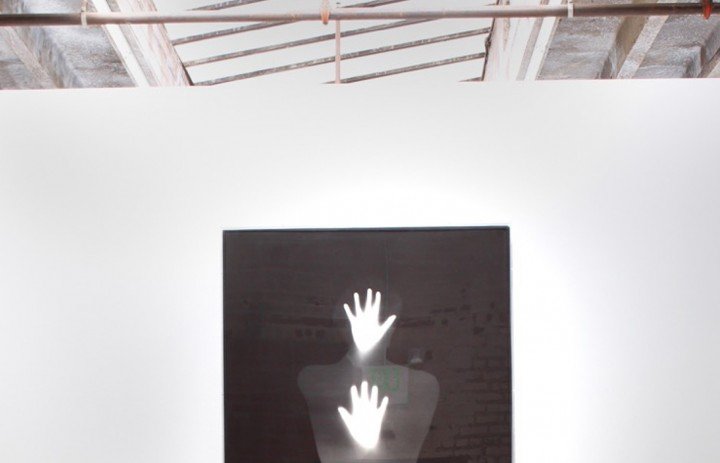- Address: 260 Utah Street, San Francisco, CA 94103
- Owner/Director: Todd Hosfelt
Todd Hosfelt (T): My gallery is in a building that was built to be a door factory. It’s just under 10,000 square feet and naturally illuminated. We finished the floors white and the light from the translucent sky-lights bounces off the floor, bright, but soft and shadowless. We didn’t touch the perimeter walls, columns or ceiling: they’re rough with the history of the structure. The space is divided into three large galleries by twelve-foot-high partitions that don’t go to the ceiling – to two ends – so light would be able to pass over them and so you’d be conscious of the scale of the space. You get long, revealing views between the galleries which allows me to create relationships between artworks, but each space is also discrete.
The physical gallery is a metaphor for the program of the gallery. The artists we exhibit have an understanding of history – cultural, social, political, literary – and make work that reflects that knowledge. Their art comes from an informed place, but it’s inventive and original. The architecture does the same thing. By inserting a contemporary gallery design into an historical shell, we’re making an innovative use of something that came before us. I don’t know if visitors get that, but I get a kick out of it.
T: I’d been running a gallery for someone else when an important patron of contemporary art in San Francisco, Ann Hatch, offered to rent me a space to start my own gallery. It came completely out of the blue. Fortunately, I took her up on her offer. That was twenty years ago this month.
T: Trust your instincts. Show what you’re passionate about. Treat people well. Don’t work with assholes.
T: Art gives you an opportunity to see the world from someone else’s perspective. If you’re open to it, that can be transformative.
T: The Bay Area is different than anywhere else – it’s the place people have come when their ideas or lifestyles were too outrageous for the rest of the world, and the community here embraced their eccentricity and innovation. I love the openness of San Francisco. We have world-class museums, a history of great artists, committed gallerists and passionate collectors. The tech economy has fueled astonishing growth and opportunity as well as challenges. It’s expensive to live here, so it’s difficult to make a living as an artist or a gallerist here. But the truth is, it’s difficult to make a living as an artist or gallerist anywhere. I’m seeing a new generation of collectors in the Bay Area who are open-minded and value inventiveness. And I’m also seeing the community begin to rally to develop creative solutions that will make it possible for artists to continue to live and work here. It’s an exciting time in the Bay Area.
T: Look at everything you can. Read everything you can. Live. Think. Practice. Along the way, build a supportive community.
T: I think art making is about having a vision and the ability to express it uniquely and in a way that’s compelling. I don’t think how you get there is important.
T: Sorry, I can’t do it… I don’t have a favorite food or color or type of music or season of the year either.
When you find a piece of art that you can’t forget about and you find yourself talking about it to others, you should acquire the piece. That is when you know you have fallen in love and will live happily ever after in the company of art in your everyday existence.
T: Different exhibitions are challenging in different ways. Sometimes you’re driven crazy with anxiety because an artist works up until the last minute and you don’t know if they’ll be ready for their opening. Sometimes laying a show out is formally difficult or the logistics of installation are complex or problematic. Some art is difficult to write about. My current exhibition – the first West Coast exhibition of Australian artist Patricia Piccinini – is problematic in a different way. Her work can seem grotesque or shocking and my job is to guide viewers past their initial repulsion so they’ll begin to think about the really important issues she’s asking them to consider.
T: I don’t have a clue! Twenty years ago, no one would have been able to foresee the important roles that art fairs or internet sales would play in the gallery world. I think the key is to pay attention, be willing to try new things and to build on what works. Don’t get stuck in ruts. The role of a dealer in contemporary art has always been to be ahead of the curve when it comes to aesthetics and ideas… now we need to think the same way when it comes to doing business.
- Note on featured artworks by Jay DeFeo: May not be reproduced in any form without permission of The Jay DeFeo Foundation. © 2015 The Jay DeFeo Trust/Artists Rights Society (ARS), New York.
- Photo Credit: David Stroud

